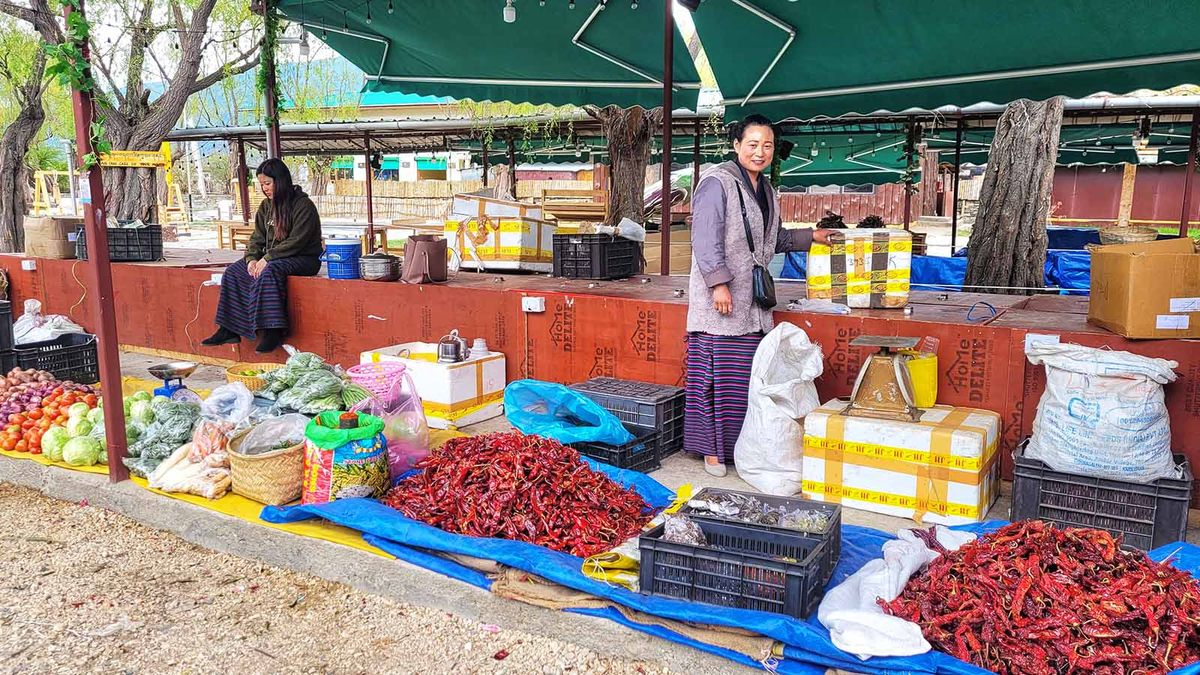"In Bhutan, we don't use chilli as a spice but as a vegetable," says my guide Yeshi as he piles the mound of rice on his plate with curry. But it's no ordinary curry — it's ema datshi, Bhutan's national dish, made of cottage cheese (datshi in Dzongkha) and hot chilli peppers (ema). Chilli in its fresh and dried form is ubiquitous at the Bhutanese table — copious amounts of it go into every dish and there's always an assortment of ezay (chilli sauce) at the table for good measure.
Origin story
Chillies are not native to Bhutan. After being introduced in India around the 16th century, they were probably taken to Bhutan a century or two later by pilgrims and traders. And the Bhutanese took to them with great gusto. I wonder if it’s because of the extreme cold, and Yeshi agrees. Hot food is a natural way of staying warm in winter. “Some even say that chillies improve blood circulation and prolong life. We start eating them at a very young age, with our parents increasing the chilli amount as we grow. It’s like an addiction — my father wants nothing but chilli and salt,” he laughs.
I get a glimpse of this chilli mania at Thimphu’s Centenary Farmers’ Market. There are stacks of chillies everywhere — fresh green ones of various shapes and sizes, plump red ones, sun-dried and crinkled red ones (like Kashmiri chillies), and even dried pale yellow ones. The Bhutanese apparently eat a kilo of chilli every week; the very thought of it makes my eyes water.
Table manners
And they actually do, when I get my first taste of Bhutanese food. At Authentic Bumthang Restaurant in Thimphu, we order ema datshi along with a serving of khulee (buckwheat pancakes). Other dishes that make an appearance at the table are jangmali (noodle dish) with egg, shakam datshi (dried beef in cheese and chilli curry), pork thukpa, ezay, and a massive bowl of white rice. Along with chilli, rice is another Bhutanese staple. All curries and even dry dishes are eaten with rice — red rice being traditional but white rice imported from India is popular (and cheaper).
I gingerly taste a spoonful of ema datshi, carefully avoiding the sliced chillies — it promptly sets my tongue on fire. Dipping the khulee in the curry makes it marginally better, although ladling a small amount of it over a big helping of rice is the best way to go. To douse the fire in my mouth, I call for Red Panda beer, a locally brewed unfiltered Hefeweizen. The jangmali is not as spicy, and I don’t make the mistake of eating the shakam datshi as is. The thukpa is quite bland (are my tastebuds already adapting to Bhutan?) so I add a smidge of ezay to it, which transforms the whole dish — perhaps there’s something to this chilli business after all.
Plate up
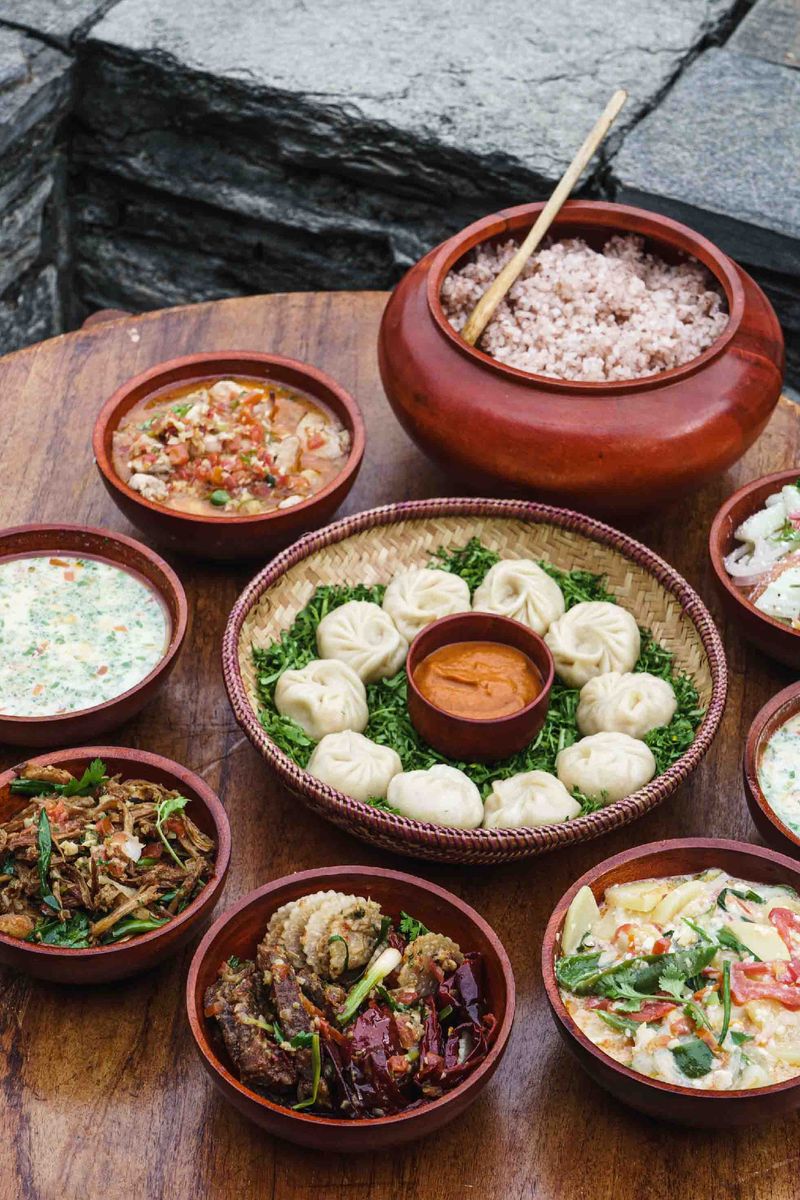
At Amankora’s Thimphu lodge where I’m staying, Executive Chef Anton Rautenbach gives me a masterclass in momos and ezay. We make vegetable and beef momos, and Chef Anton tells me that depending on the filling, the momos are shaped differently. To make the ezay, I don a pair of gloves to avoid touching the chillies directly. The ingredients are laid out neatly — fresh green chillies and dried red ones, Sichuan pepper, tomatoes, green garlic, coriander, and fish mint (a variety of mint that has a strong fish aroma). We pound them up using a mortar and pestle along with salt and oil till it becomes a slightly chunky paste. We also make a dry ezay with chilli powder, shallot, tomato, cheese, coriander, salt, and a touch of oil. On that rainy spring morning, I savour piping hot momos dipped in even hotter ezay.
Over four days, I sample more Bhutanese dishes. At Kalden Restaurant in Thimphu, I try shakam paa (dried beef stir-fried with sliced radish and chilli), lip-smacking pork ribs, dry fish paa (dried fish stir-fried with chillies), and gondo datshi (a glorious egg scramble with datshi cheese, dollops of butter, and a hint of chilli). A tall glass of cold daww (buttermilk) is all I need to make it through the meal — the warm and mildly salty suja (yak butter tea) is not really to my taste. In Paro, I pair my meal with locally made peach wine, which is cloyingly sweet (like dessert wine), but a good antidote to the spicy food on my plate. At Mountain Café (also in Paro), I particularly enjoy puta, buckwheat noodles stir-fried with vegetables, egg, and Sichuan pepper. The café also offers excellent coffee made with beans grown in Southern Bhutan.
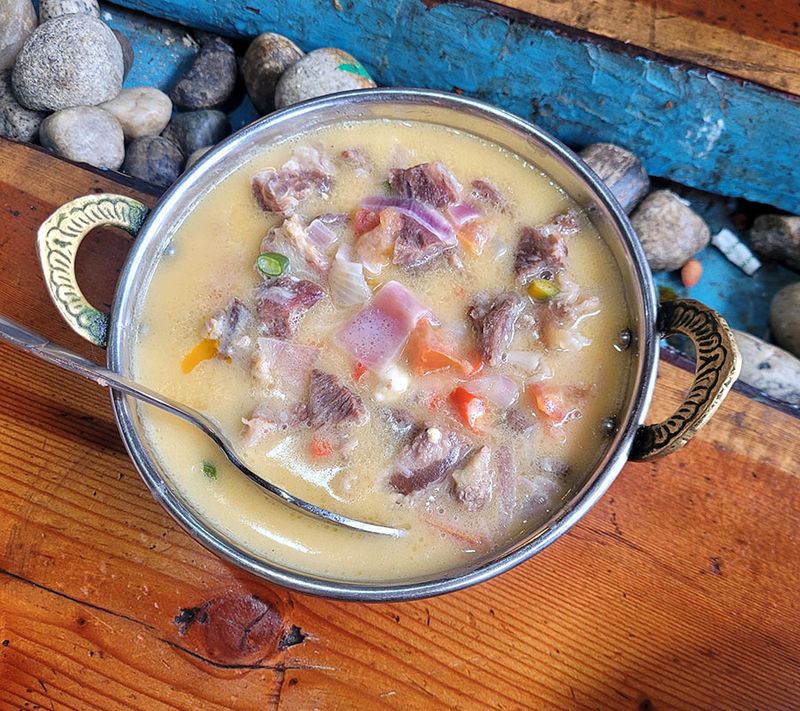
Parting shot
On my last day, I head to Kaja Throm Market in Paro where a giant chilli installation greets me at the entrance. As I wander around the market, garlands of chugo or chhurpi catch my eye. This dry, extremely hard cheese is made from yak’s milk and the Bhutanese love chewing it through the day or on long drives. I try a small piece of it and all I can say is that it’s an acquired taste! But I’m in the market for something spicy — a smiling woman vendor surrounded by mounds of chillies agrees to sell me an assorted sample for 100 nu (1 Bhutanese ngultrum is equivalent to INR 1). Pro tip — you can pay in Indian currency everywhere in Bhutan although you will receive nu in change.

For my last supper, I choose the Bhutanese set meal at Amankora Paro — a large bowl of red rice is accompanied by six small bowls, all containing local delicacies ranging from yaksha laphu paa (braised yak with radish and dried chilli) to kewa tshem (potato curry with fresh green chilli), and more. I find that the kitchen has toned down the heat quotient to cater to their international guests — and I’m not complaining.

Must-try restaurants in Thimphu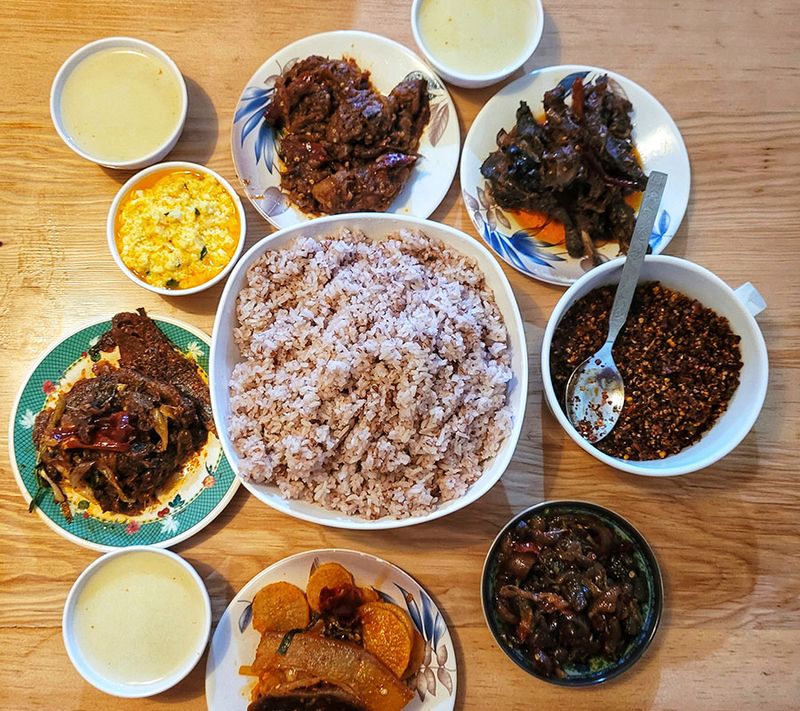
Must-try restaurants in Paro:
Markets to visit:
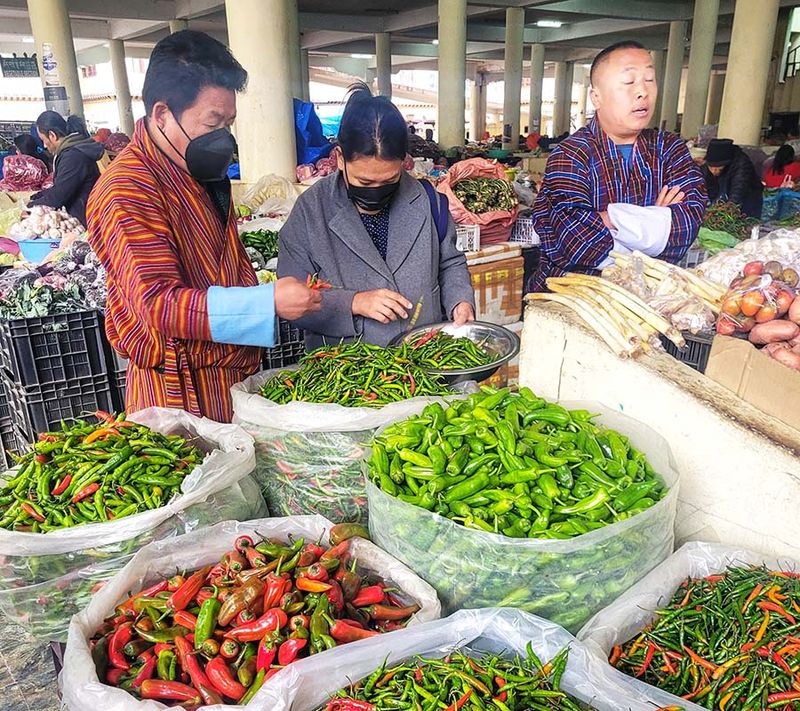
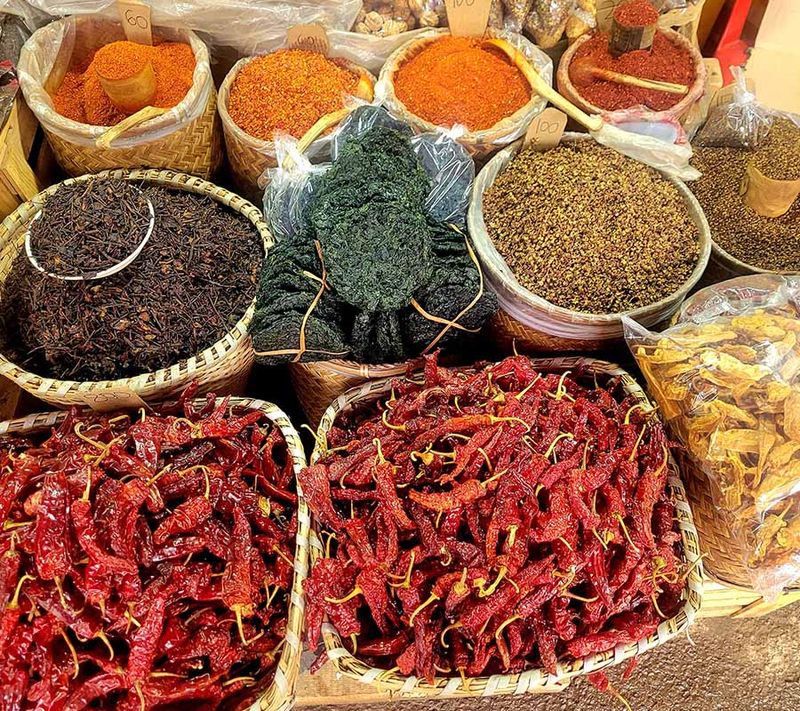
|


